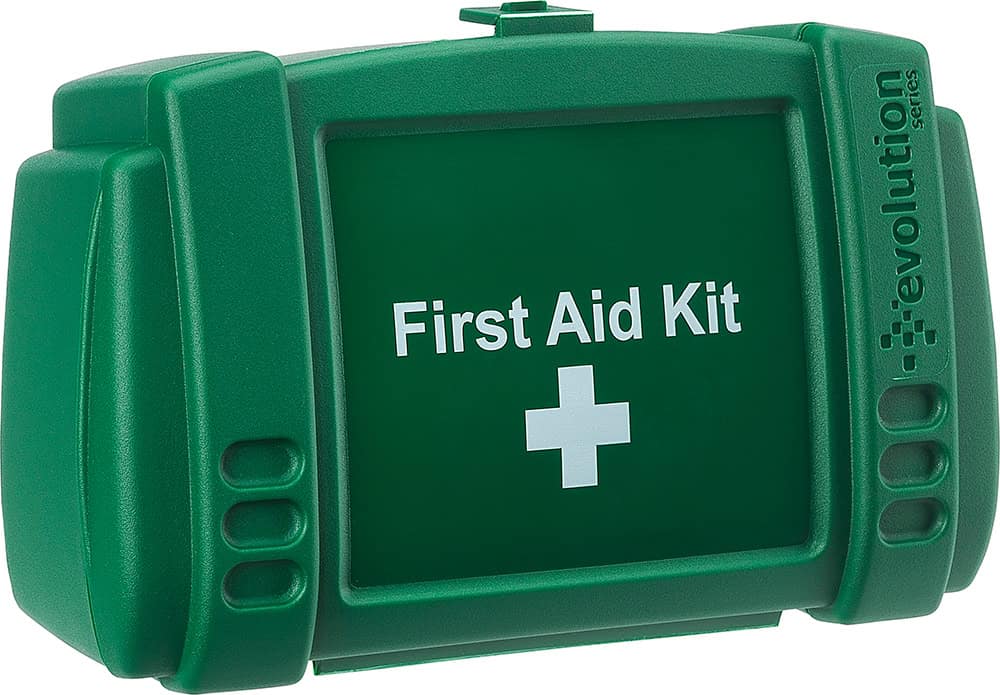No matter what you are doing, it is important to have first aid supplies available should an injury occur. In this article we will compare the different types of personal first aid kits and discuss what has to be included in each type.
Key benefits of a personal first aid kit
There are several benefits to having a personal first aid kit available to you. These include:- Compact cases – the smaller cases can fit into tight spaces so that even if you are restricted for space. For example, having a small travel first aid kit in hand luggage when flying or one stored in a rucksack or saddlebag on a motorbike, means your essential first aid supplies are always close by.
- Suitable for different situations – Personal first aid kits can cover a variety of different situations, from critical injuries where there is catastrophic blood loss to paper cuts in your home office.
- Includes a guidance leaflet – Even if you don’t have any first aid training or experience, all of our first aid kits, including our personal first aid kits include guidance leaflets. This is to ensure that the person using the supplies has some information on treating common injuries available to them.
- Treats minor injuries – Each personal first aid kit will include the necessary supplies, such as gloves, wipes and plasters, to treat minor injuries.
What should a typical personal first aid kit contain?
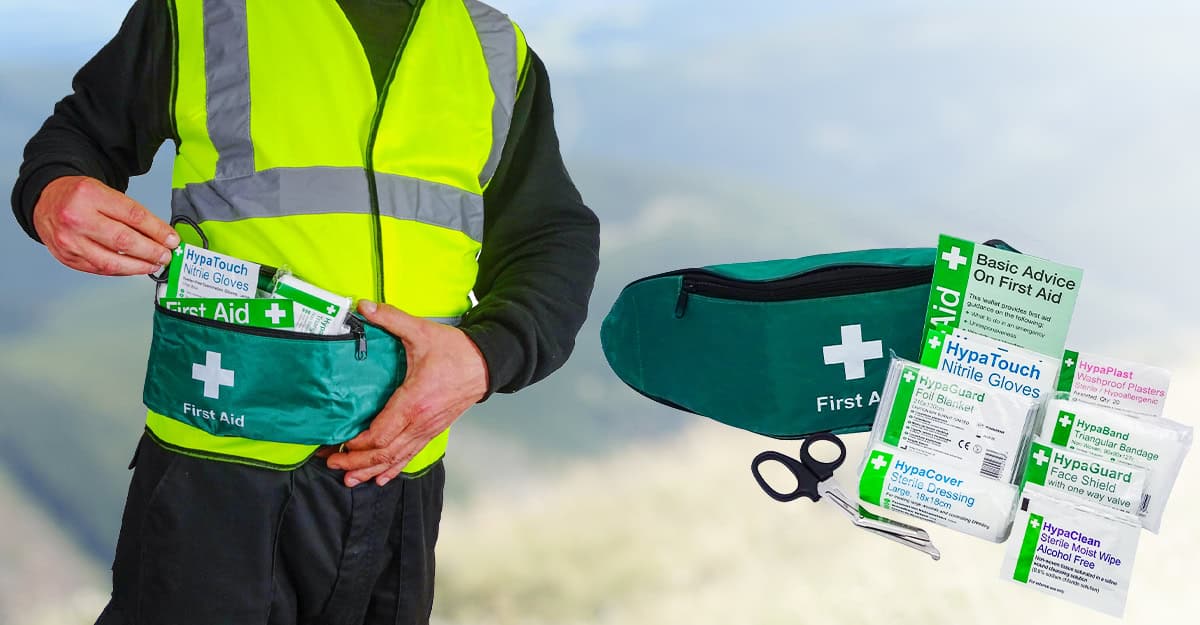
The contents of a personal first aid kit will vary drastically depending on the use of the kit. For example, a personal trauma kit used primarily when working in a high-risk industry or with machinery will be more focused on stemming heavy blood loss.
As with most general first aid kits, there is the option of purchasing British Standard personal first aid kits which offer a comprehensive selection of first aid equipment and means that you are as safe as can be. The British Standard for workplace first aid kits, builds upon HSE specifications by determining what contents a compliant kit should have based upon the needs of different workplace environments and sizes.
Essentials
The essential items that should be included in every personal first aid kit for general use are:- Gloves – to limit the risk of contamination both to the first aider and the casualty.
- Sterile wipes – to clean the wound before covering it.
- A guidance leaflet – to provide information on basic first aid for common injuries.
- Plasters – To cover wounds and prevent debris from entering them.
- Dressings – The type varies between first aid dressings, low adherent dressings and trauma dressings, but these are to treat any wounds that are too big for the plasters included.
Recommended
While the supplies listed above are the essential components for our personal first aid kits, we also recommend including, items such as:- Face shields - to minimise the chance of infection when providing mouth to mouth.
- Foil blankets - to keep the casualty warm while awaiting medical personnel, or to treat hypothermia.
- Triangular bandages - to immobilise the injury.
- Clothing cutters - to remove any clothing that is obstructing access to the injury.
- Burn dressings - particularly recommended for vehicle first aid kits but provide fast acting relief to burns.
- Microporous tape - to firmly secure dressings, preventing them from slipping.
- Safety pins - also to secure any bandages or dressings to the wound.
- Eye wash pods - to wash out eyes from any irritants they have come into contact with. Especially important if there isn’t a supply a clean running water.
- Eye dressings - to protect the eye if it has been injured.
Personal trauma kits
Trauma kits have a slightly different standard when it comes to the contents of the kit. These are primarily designed for treating blood loss so won’t necessarily contain all of the essential supplies that are found in other personal first aid kits, for example, wipes and plasters. Instead, a personal trauma kit should contain:- A tourniquet
- Haemostatic dressings
- A guidance leaflet
- Gloves
- Trauma dressings
- Burn dressings
- Face shields
- Foil blankets
- Clothing cutters
Types of personal first aid kit
There have to be many types of personal first aid kit to ensure that there is one suitable for every situation. Due to this there are also many different ways to store your first aid kit, some will work better for certain environments than others, so it is always best to check which would work for you before purchasing.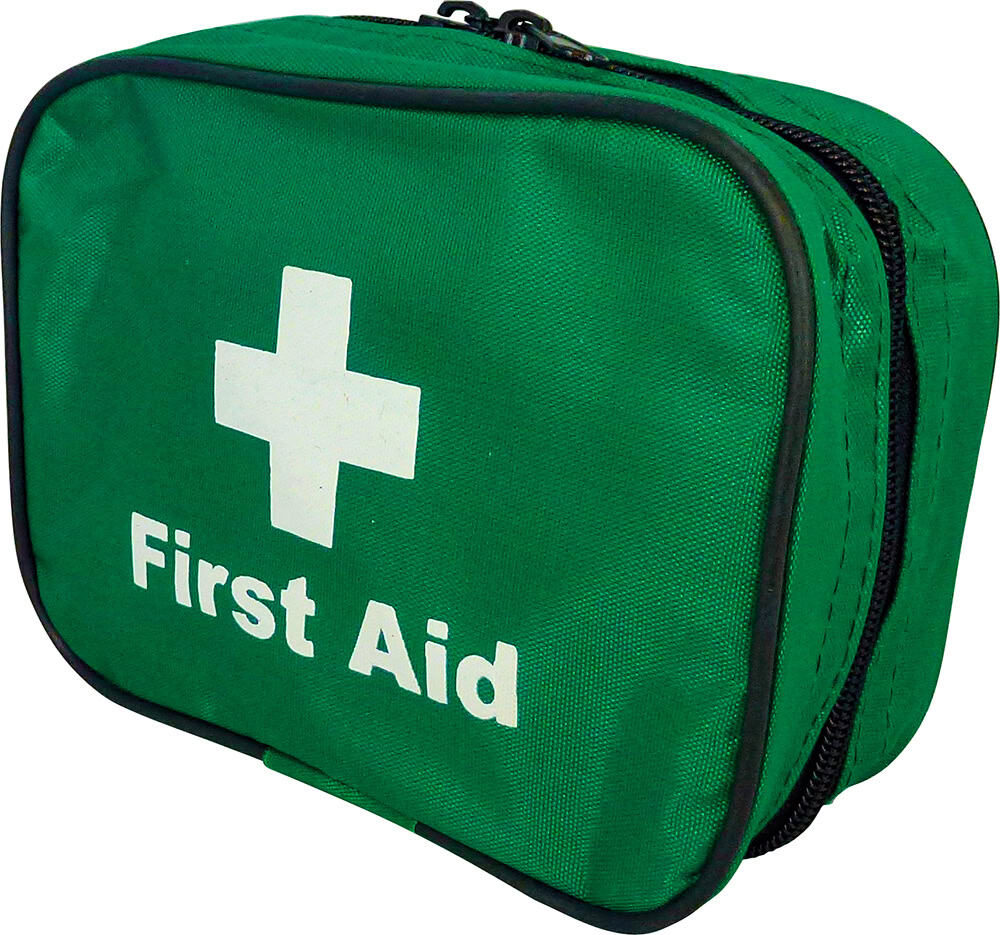 Pouch
Pouch
Having your first aid supplies in a nylon pouch is ideal for those needing quick access to supplies.The pouch can be attached to a belt via loops on the back, meaning that the kit can be carried around with you no matter where you are going. This is the perfect solution for those exploring the great outdoors, as well as those who are working in an environment where there is no central location for a first aid kit.
Common uses
- Emergency response
- Travel
- Outdoor activities
- Workplace first aid
- Car first aid
- Sports injuries
Wallet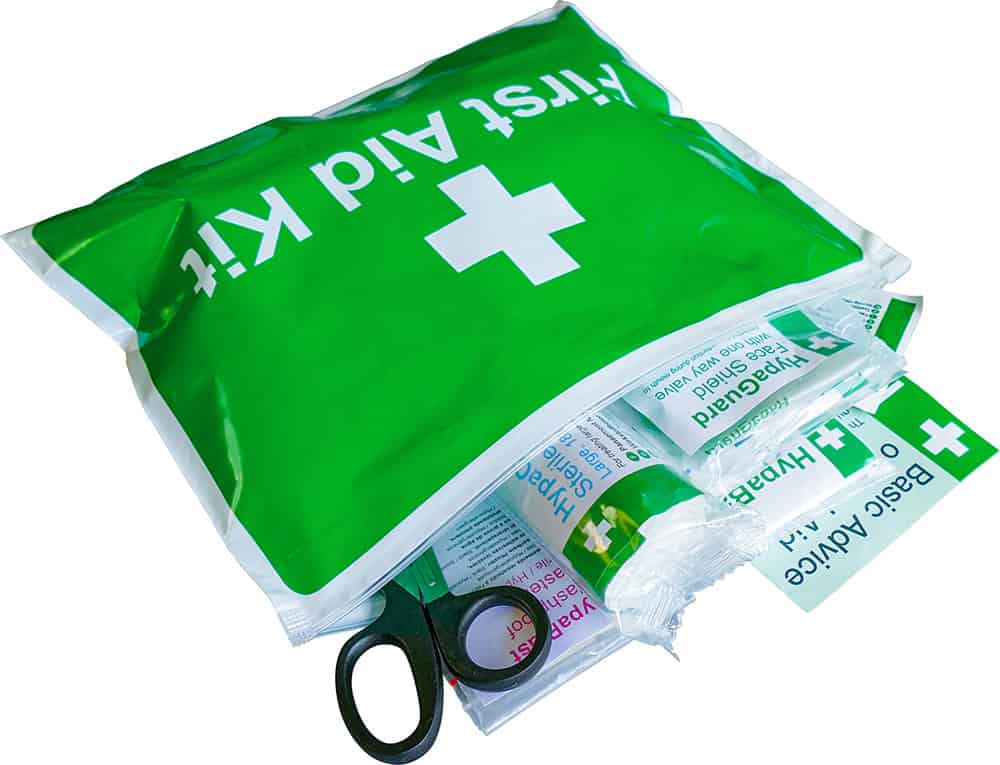
The vinyl wallet first aid kits provide a lightweight, economic option, perfect for those that are on the go with reduced space. These are ideal for off-site employees and first aiders.All of our vinyl wallet kits come fully stocked with the supplies needed to provide basic first aid in an emergency.
Common uses
- Personal, everyday first aid
- Travelling
- Commuting
- Supplementing other first aid kits
Bag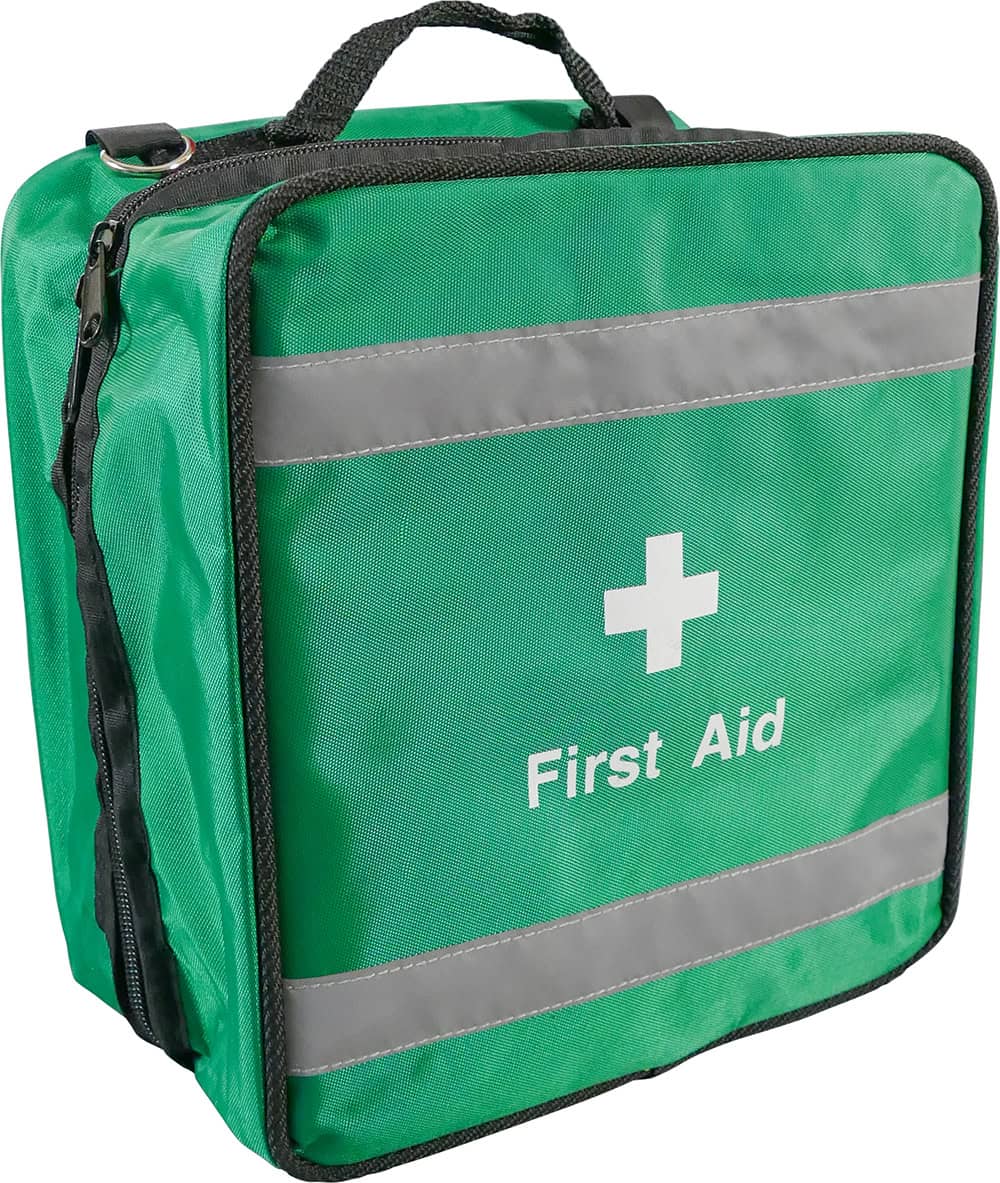
First aid bags are a favourite among medical professionals, ideal for on-the-go first aid and convenient storage of essential supplies.The bags tend to be larger to accommodate more supplies than most of the other personal first aid kits, however, if you prefer to have a first aid kit in a bag, there are also options available for smaller bags.
Most first aid bags will come with built in pockets to keep supplies separated and hold them in place when on the move. This makes it easier to find what you are looking for in an emergency.
Common uses
- First responders in emergency situations
- Outdoor activities
- Remote travel
- Workplace first aid
- Vehicle first aid
- Sporting injuries
- Event first aid
- School first aid
- Home first aid
Cases
Hard cases tend to be used less when travelling, more commonly kept in one location unless they are being used as a car or motor vehicle first aid kit.
Common uses
- Home first aid
- Workplace first aid
- Vehicle first aid
- School first aid
- Emergency prepardness
- Military and tactical operations
Comparison
| Pouch | Wallet | Bag | Cases | |
| Dimensions | 16.5cm x 12cm x 7cm | 24cm x 30cm | Varies - depends on the bag | Varies - depends on the case |
| Durability | Fairly durable | Not very durable | Durable | Very durable |
| Portability | Easily portable | Easily portable | Easily portable | Easily portable |
| Water resistant | Yes | Yes | Yes | Yes |
Tips for creating a personal first aid kit
When putting together a personal first aid kit, start by considering the types of emergencies you want to be prepared for. You might want a kit that can travel with you on a motorbike, or one that you can wear around your waist for everyday use while on the go.Once you have decided on its purpose you need to consider how you are going to store the first aid supplies. As it is a personal first aid kit, it is likely that the container you choose will be small and portable, there are a variety of options available to you including cases and bum bags.
How often should you refill a personal first aid kit?
As with any first aid kit, the supplies in a personal first aid kit will expire and need replacing.Typically, first aid kits will last between three to five years, but individual supplies may have a shorter life span than others, so it is always best to check regularly.
It is also important to be aware of which supplies are being used in your first aid kit and replacing them as soon as you can. This will ensure that the first aid supplies are all ready when they’re needed, and you aren’t caught short because you didn’t remember to refill your kit. If you would prefer to replenish your supplies in bulk, we do offer multiple refill kit options.
Need support building your personal first aid kit?
Personal first aid kits provide a portable solution to basic first aid needs, whether the person treating the casualty has prior training or not. They are perfect for acting as go bags as these small kits can be used in various situations, including critical injuries, but are not suitable for mass casualty scenarios.Make sure that your personal first aid kit is always ready for use by checking the supplies regularly and replacing them if they appear to be damaged or out of date.
Read our other blogs for more information on first aid or contact us for further advice and information on our products.
By Sarah Mason



